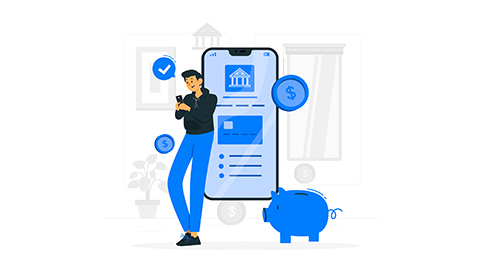How to Overcome New Security Challenges with Adoption of Cloud
Despite being around for two decades, the cloud has become a must-have for modern businesses. Plenty of data points to the cost benefits, business efficiencies, and competitive advantages, leading more and more businesses to implement cloud solutions. That comes with a big risk, however. According to the Cloud Security Alliance’s 2021 report “ State of Cloud Security Concerns, Challenges and Incidents,” 41% of participants weren’t sure if they had a cloud security incident in the past year.
That percentage has doubled since 2019. Clearly, businesses know that cloud security is important, but they’re not sure exactly why or how to protect themselves. With cloud security threats on the rise, that’s not a good place to be. Many organizations have attempted to protect their cloud environments with existing security solutions and failed to adopt native cloud security solutions.
Organizations often use two or more public cloud providers to adapt to their organizational needs. These providers host a wealth of sensitive business and customer data, critical applications, and other high-risk information that cyber criminals want to access. As more organizations put their trust in multi-cloud or hybrid cloud environments without a thorough understanding of the vulnerabilities and threats – or a strategy to secure them – they’re putting a lot at risk.
Challenges to Security with Multi-Cloud Environments
Cloud environments are vastly different from legacy infrastructure, which is part of their appeal. They can do what traditional solutions can’t. But that also means that organizations can’t rely on the tried-and-true security tools and practices they’ve used in the past. They’re not designed for cloud environments. Instead, the cloud requires a modern, non-traditional approach, much like it. A privileged access management (PAM) solution combines traditional tools to manage access control with time-sensitive capabilities. With PAM, users no longer have full access to the network. Instead, they have the least privilege, meaning users get the minimum privilege they need, and only for as long as they need it.
So, if a user’s account is compromised in any way, the criminal has limited access, which restricts what they can steal. Otherwise, they’d have unrestricted access to the entire network, which can magnify the breach’s impact. However, the least privilege isn’t always the case. If a user does need elevated privileges to complete a task, their access is elevated as needed, gradually, and only for a short period. When they’ve completed their work, the privileges are revoked.
This is effective because the privileged access process is consistent across users, locations, and operating systems, reducing any “weak links” that could compromise the system. This helps an organization move to zero persistent privileges, significantly reducing the business risk.
Organizations facing cloud security challenges can enhance their defences with innovative provisioning methods. Just in time provisioning offers a strategic approach, limiting access rights dynamically based on immediate needs, significantly reducing potential vulnerabilities. This method can resolve the common hurdle of maintaining the least privilege principle while allowing for necessary elevated privileges, bridging the gap between operational efficiency and robust security protocols.
Data Protection and Privacy
Diverse, complex environments are challenging to manage effectively with consistent, organization-wide privacy and data protection. Different cloud providers often have built-in security tools , leaving organizations thinking they’re safe to count on this protection. Organizations still struggle with compliance and regulatory requirements across multiple cloud environments, however. One of the major challenges is that while cloud environments have many built-in tools and do security by design, unfortunately, they are not enabled by default for many. 
These disjointed cloud environments have various tools and controls to ensure cloud security, so there’s no option for an organization-wide solution. Then, no matter how robust the security is for different clouds, there are unnoticed weak spots and vulnerabilities with no protection.
Cloud Management Platforms (CMPs) can offer a solution to cloud security and management. Instead of juggling the requirements between different cloud environments, administrators can rely on a unified interface with full visibility. IT teams then can provide a consistent, system-wide security layer in a multi-cloud environment with access management for all users.
Employee Skills Gaps
The employee skills gap concerns cloud adoption for many reasons, including security. Organizations are limited in how much knowledge and expertise they can rely on for stringent cloud security measures.
According to the PwC CEO Survey in 2020, 77% of leaders were concerned about the supply of key skills among talent. To address this, organizations prioritize reskilling or upskilling employees to ensure organizational agility for the future and the cybersecurity skills they need now.
A skills gap analysis can reskill or upskill employees who lack cloud skills. Once the missing skills are identified, organizations can implement training and development programs to get their employees to the required level.
The cloud is continuing to evolve and grow. Upskilling and reskilling employees isn’t a “one-and-done” experience. Employees will need ongoing learning and development processes to stay current on the cloud and adapt to future changes. Organizations should have systems in place to assess and develop employees overall.
Visibility and Control
Visibility and control are among the biggest challenges in a cloud environment. The shared responsibility model shares security between the cloud provider and the customer/end user. The cloud provider is responsible for maintaining cloud security, while the organization is responsible for the security of the cloud. This responsibility differs between cloud models such as IaaS—Infrastructure as a Service, PaaS—Platform as a Service, and SaaS—Software as a Service.
In multi-cloud environments, organizations have challenges with visibility and control in the lower layers of the stack. Traditional solutions aren’t ideal, leaving them with limited options to correct the problem. 
There are several solutions to this problem:
- Manage identity and access controls: Identity and access management (IAM) in the cloud can be more difficult than in closed environments. Your provider could provide managed services or best practices, but your organization is responsible for using them consistently and properly.
- Enforce data governance and policies: Since cloud data ownership falls on the organization, policies should be in place for cloud data ownership. Data should be classified to ensure that cloud security protocols are in place.
- Implement data security management tools: Data security management tools are essential to maintaining data security with increasing cloud adoption and complexity. The complexity only grows as organizations scale, creating more hurdles with visibility. A data security management tool provides a streamlined, centralized option to manage data and users effectively.
Manage the Challenges of Cloud Adoption
The hybrid cloud or multi-cloud infrastructure offers numerous benefits to an organization—often more than either one offers on its own. Scalability, flexibility, and reliance on a cloud provider can be helpful for an organization looking to leverage the cloud for success, but as adoption increases, so do the weaknesses and vulnerabilities. These challenges can be addressed with innovative, agile security protocols that help organizations maintain robust security protocols and compliance in their hybrid and multi-cloud environments.




Leave a Reply